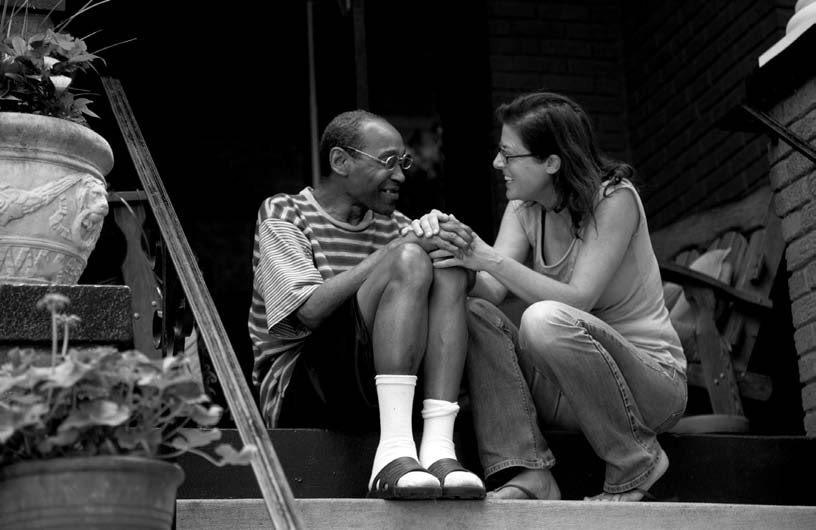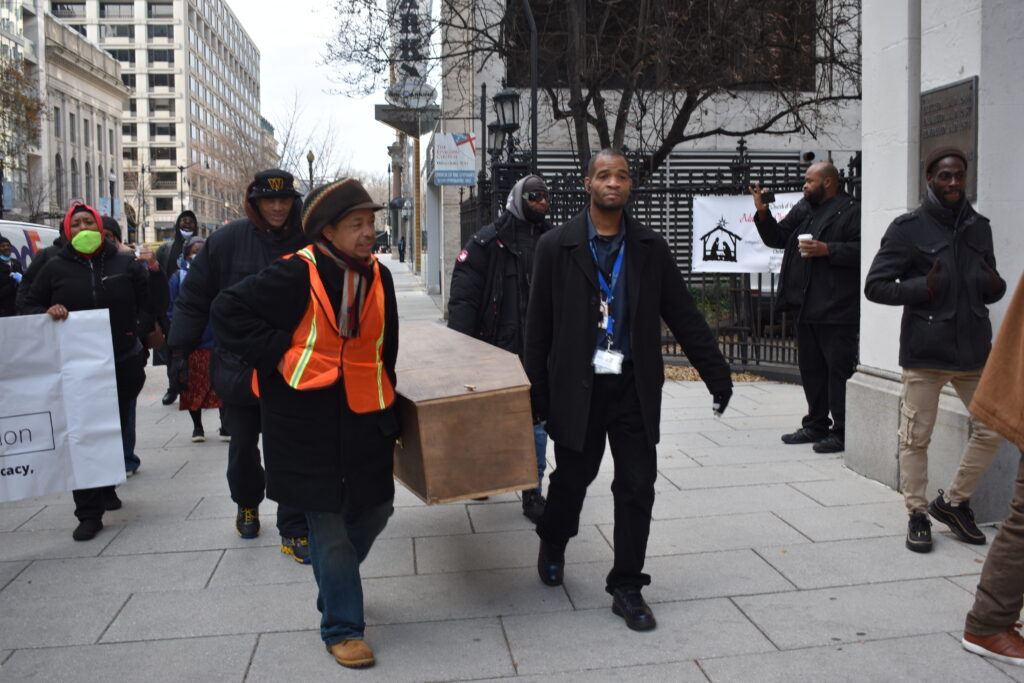When the hospital was discharging Anthony, a social worker told him that he had two choices: a homeless shelter or Joseph’s House, a hospice for homeless HIV/AIDS sufferers in Northwest D.C. Anthony did not hesitate. His father had lived for seven years at Joseph’s House—and died there. “I visited him every day,” Anthony said. “It scares me that I’m in the same place. But he was a fighter to the end, and I’m going to carry the legacy on.”
Joseph’s House, a three-story brick townhouse in a leafy residential section of Adams Morgan, has been providing compassionate care to the dying for 21 years. The building has accommodations for nine residents at a time and serves about 40 residents each year.
Founded in 1990 by Dr. David Hilfiker, then working at a nearby medical recovery shelter for the homeless, Joseph’s House originally served African-American men with end-stage HIV/AIDS. As more effective treatments became available for those who could afford them, the hospice evolved. “Today we welcome women as well as men,” says Patty Wudel, the organization’s executive director, “and people with end-stage cancer and other terminal diseases.”
Wudel also notes that in recent years, the house’s residents are more likely to suffer from mental illness and active addiction. Also, higher numbers of non-English and non-Spanish speaking residents have created a need for volunteer translators.
According to Bill Burns, a Navy retiree and a member of the hospice’s board, Joseph’s House has three primary goals: providing physical nurturing, offering spiritual companionship, and promoting a sense of self-worth and dignity. That spiritual companionship runs both directions, he says, benefiting the staff and volunteers as well.
Burns, who has been volunteering for the last two and a half years to help cook breakfast on Friday mornings, says: “I find it inspirational.”
The nursing care at Joseph’s House is high-quality, and the facilities are clean and comfortable. The first floor houses a large dining room centered on a long polished wood table where residents share communal breakfasts and evening meals. A large colorful mural illustrating scenes from hospice life fills most of one wall. And at the far end is a mantle piece containing cards of remembrance for the recently deceased.
The spacious living room contains several stuffed couches and armchairs, a widescreen television, a small piano tucked into one corner and a computer on the opposite side of the room. It serves as a meeting room, entertainment center and the place where memorial services are held when a resident passes away.
A long, L-shaped kitchen, leading out to a side porch, completes the first floor. The kitchen is one of the most popular rooms in Joseph’s House. Residents, staff and volunteers share the cooking; snacks are available in the refrigerator; and it’s a place people just like to hang out.
The second floor has four bedrooms with five beds. Additional bedrooms are located in the basement. References to family and community come up often in conversations with the residents and staff. “These people here are my family now,” Anthony says. “They’re concerned about you as a human, not as a walking disease.”
Yared, an Ethiopian refugee who has been at Joseph’s House for nine months, agrees with Anthony. “The food here is good. The people are good. They treat you like family.”
For Yared that includes the opportunity to participate in the communal kitchen where he sometimes prepares doro wat (chicken stew) and shiro wat (a chickpea curry) for communal meals. Eric Ogden, who served as a Jesuit volunteer at Joseph’s House 10 years ago and now teaches fourth grade in New York City, returns each summer for two weeks to fill in for the regular volunteers on vacation. “Joseph’s House is the definition of community,” he tells a group of visitors. “It’s so easy here to love everyone around you. It recharges me.”
Joseph’s House, a 501(c)(3) nonprofit with an annual budget of slightly more than $1 million, suddenlyfound itself facing serious financial challenges two years ago.
Until 2009 it had relied on government grants and contributions for up to 75 percent of its funding. The recession reduced that assistance, with government funding now accounting for only about 45 percent of total expenses.
To help make ends meet, the organization’s board turned to foundation grants and individual donations. They worked to increase online donations and became more innovative in their private fundraising. For example, the hospice developed an unusual and innovative outreach program by sponsoring educational breakfasts for visitors interested in learning more about the hospice and its work.
Twice a month over coffee, juice, muffins and fresh fruit, small group of staff and volunteers spend an hour or so talking with visitors about life and death at Joseph’s House.
Street Sense readers interested in learning more about Joseph’s House can find additional information, including a 10-minute PBS video documentary, at the hospice’s website:
www.josephshouse.org.








